
The Carthusians, also known as the Order of Carthusians, are a Latin enclosed religious order of the Catholic Church. The order was founded by Bruno of Cologne in 1084 and includes both monks and nuns. The order has its own rule, called the Statutes, and their life combines both eremitical and cenobitic monasticism. The motto of the Carthusians is Stat crux dum volvitur orbis, Latin for "The Cross is steady while the world turns." The Carthusians retain a unique form of liturgy known as the Carthusian Rite.

Cosimo Fanzago was an Italian architect and sculptor, generally considered the greatest such artist of the Baroque period in Naples, Italy.

The Certosa di Pavia is a monastery and complex in Lombardy, northern Italy, situated near a small town of the same name in the Province of Pavia, 8 km north of Pavia. Built in 1396–1495, it was once located on the border of a large hunting park belonging to the Visconti family of Milan, of which today only scattered parts remain. It is one of the largest monasteries in Italy.

Vomero is a bustling hilltop district of metropolitan Naples, Italy — comprising approximately two square kilometres (0.77 sq mi) and a population of 48,000.

Padula Charterhouse, in Italian Certosa di Padula, is a large Carthusian monastery, or charterhouse, located in the town of Padula, in the Cilento National Park, in Southern Italy. It is a World Heritage Site.
Certosa is an Italian word meaning Carthusian monastery, or charterhouse. It may refer to:

Padula is a comune in the province of Salerno in the Campania region of south-western Italy. It is the home of the Carthusian monastery Certosa di San Lorenzo, sometimes referred to as the Certosa di Padula. As of 2011 its population was of 5,279.
San Martino may refer to:

Florence Charterhouse is a charterhouse, or Carthusian monastery, located in the Florence suburb of Galluzzo, in central Italy. The building is a walled complex located on Monte Acuto, at the point of confluence of the Ema and Greve rivers.
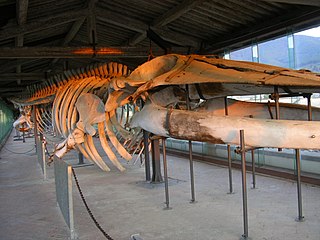
Pisa Charterhouse is a former Carthusian monastery, and is the home of the Pisa Museum of Natural History. It is 10 km outside Pisa, Tuscany, Italy.
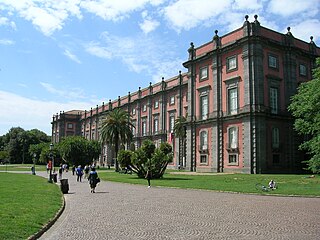
The Royal Palace of Capodimonte is a large palazzo in Naples, Italy. It was formerly the summer residence and hunting lodge of the Bourbon kings of the Two Sicilies, one of the two royal palaces in Naples. Today, it comprises the National Museum of Capodimonte and the Royal Forest. The palace was constructed on its somewhat cooler hilltop location just outside the city, with urban Naples ultimately expanding around it.

Garegnano Charterhouse, also known as Milan Charterhouse is a former Carthusian monastery, or charterhouse, located on the outskirts of Milan, Italy, in the Garegnano district. It now houses a community of Capuchin Friars.
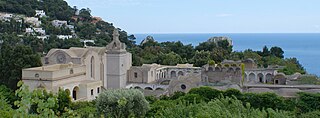
Certosa di San Giacomo was a Carthusian monastery, founded in 1363 by Giacomo Arcucci on the island of Capri, Campania, southern Italy. It is now a museum and is used for cultural events. The buildings that formed the charterhouse have three main areas: the pharmacy and women's church, the buildings for monks, and those for guests. The cloister is of a late Renaissance design, while the Chiostro Piccolo features Roman marble columns.
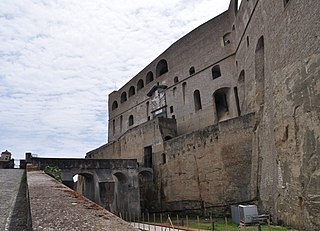
Castel Sant'Elmo is a medieval fortress located on Vomero Hill adjacent to the Certosa di San Martino, overlooking Naples, Italy. The name "Sant'Elmo" derives from a former 10th-century church dedicated to Sant'Erasmo, shortened to "Ermo" and, finally altered to "Elmo". Located near the upper terminus of the Petraio, one of the city's earliest pedestrian connections between upper and lower Naples, the fortress now serves as a museum, exhibition hall, and offices.

Montebenedetto Charterhouse is a former Carthusian monastery in the Val di Susa in Piedmont, Northern Italy.
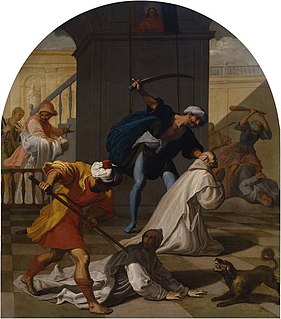
The Carthusian martyrs are those members of the Carthusian monastic order who have been persecuted and killed because of their Christian faith and their adherence to the Catholic religion. As an enclosed order the Carthusians do not, on principle, put forward causes for their members, though causes have been promoted by others on their behalf.

Farneta Charterhouse, in Italian Certosa di Farneta is a Carthusian monastery (charterhouse) just north of Lucca, region of Tuscany, Italy.

Ferrara Charterhouse, of which the present Church of San Cristoforo alla Certosa was previously the monastic church, is a former charterhouse or Carthusian monastery built in Renaissance style, located on Piazza Borso 50 in Ferrara, Region of Emilia-Romagna, Italy. The monastery was suppressed in the time of Napoleon, but the church was reconsecrated in 1813 and remains in use. The site also accommodates a large municipal cemetery, which was established in 1813.
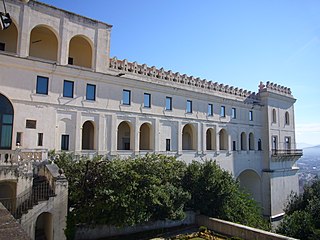
The National Museum of San Martino is a museum opened to the public in Naples in 1866, after the unification of Italy, after the Charterhouse included among the suppressed ecclesiastical assets, was declared a national monument.





















